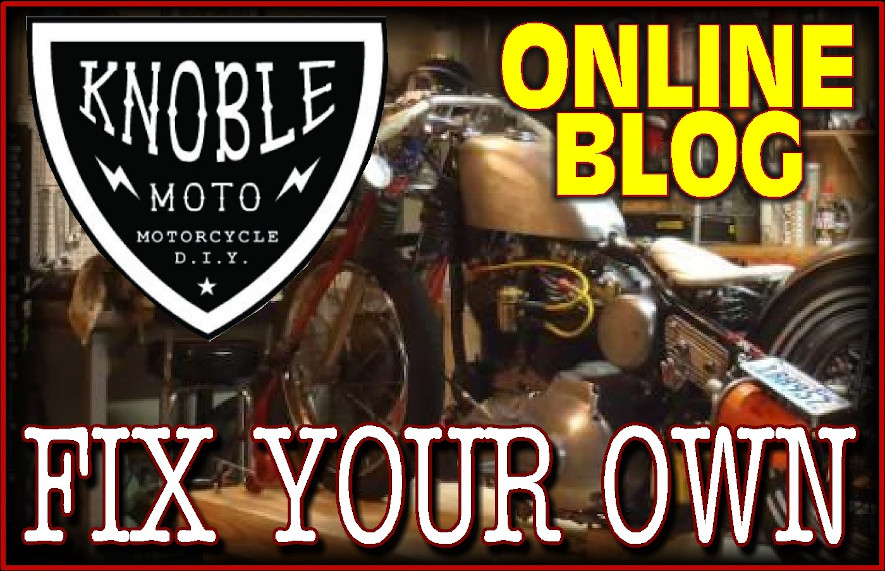
Taming the Electrical Gremlins
This month we will tear through the electrical on our XS. A few months ago, I had installed a new battery and the ignition system seemed to work, but due to a questionable electrical system the starter circuit would not work, and the bike was kick only. In addition, the non-functioning starter circuit, the headlight and most of the handlebar switches were iffy, at best.
I could have just bought replacement switches, but that is not as interesting. So, I gave them a bath in penetrating oil for a few days, and then I disassembled them. As I dissembled the switches, I took pictures with my phone, and drew pictures on the note pads. This helped immensely when it came time to reassemble the switch housings.
Once I disassembled them, I took each piece of copper and gave it a light sand with some 800-grit paper to clean the corrosion off. It appeared the only problem with the switches was excessive corrosion on the contacting surfaces. To prevent this from happening again, I put a light film of dielectric grease on all the contactors. Dielectric grease is a non-conductive lubricant that is available in most auto parts stores. It keeps the moving parts of the contacts from wearing down, while keeping moisture and the elements off the contacting surface. If your switch assemblies are working properly, there will be enough pressure on your contacts to push the grease away from the contacting surface, and electricity will conduct through the contactors. The dielectric grease also works well for spark plug boots by keeping the boot from baking itself to the spark plug, and when you ride in a driving rain, it will keep the plug from shorting out to the engine case due to the rainwater.
For replacement insulators I purchased a small Polycarbonate Sheet Stock from Grainger. It is important to purchase actual electrical insulation sheets vs using whatever plastic you have laying around, because many types of plastic conduct static electricity. I spent a little time with an exacto knife cutting insulators, and then reassembled the switches. I carefully reassembled the contacts on the switch housing, and I reinstalled the switch housings back onto the bike. Not only did the lights work, but they were brighter than they were when this project started. When I checked my headlight voltage, I was getting a strong voltage reading with virtually no voltage drop at the headlight connector. That is impressive for that old of wiring.
Speaking of old wiring here is a tip when dealing with old wires: electricity actually runs across the surface of the conductors, so when the surface corrodes, it creates resistance. Over time wires can corrode under the insulation. So even if you clean the wire off at the stripped end, there still could be a notable amount of resistance. The easiest way to check for this is to check for voltage drop. Use a meter to see what the voltage coming into the conductor is and see what the voltage is coming out the other end of the wire. If there is any more than a few tenths of voltage drop on motorcycle wiring, just replace it.
Sadly, we will never get this barn find to its full potential because someone stopped by Skidmark and offered a notable sum of money for it. While Brian and I really liked this bike, we have others that are waiting to be returned to the road. So, we sold it and reinvested the money into the garage and the MOTO GO! project. Plus, Brian has a vintage Goldwing he wants to get on the road. MOTO GO! is a mobile shop class that puts tools into the hands of kids, and gets them interested in working on things, and essentially “Brings Back Shop Class”. We hope that working on motorcycles will spark more interest than working on old lawn mowers, and considering women riders are a rapidly growing demographic of bike owners, we hope shop class will no longer just be “for the boys”. Plus when you give kids tools and let them learn by trial and error, they are more likely to grasp concepts when there is a hands on experience, in addition to building deductive reasoning skills versus just memorizing what they were told to out of a book.
In October I helped Moto Go at the AIM Expo in Columbus. We had a bench and tools set up with an early ‘70s Honda CB350 on the lift. As kids came by, we handed them tools and asked if they wanted to take something off the bike, and when we would do this, these kids eyes would light up like it was Christmas morning. At one point we had two little girls, around 10ish, excitedly tearing into the motorcycle when one turned to the other and declared “there is nothing to be afraid of!” Then she proceeded to remove a turn signal on her own. The response and interest have been outstanding regardless of gender and age. If you would like to support MotoGo, or learn more, check out their website. https://motogocleveland.com/
Knoble Moto is a partner of Skidmark Garage. We teach classes for the DIY crowd, on all aspects of motorcycle repair. Entry level maintenance, valve adjustments, carburetor cleaning and tuning, drive line service, suspensions, and even engine work. Our class subjects are updated regularly, so check back often. If there is a subject you do not see covered, shoot me an email at knoblemoto@gmail.com Find us on Facebook at www.facebook.com/knoblemoto, Instagram Knoble_Moto and www.KnobleMoto.com



